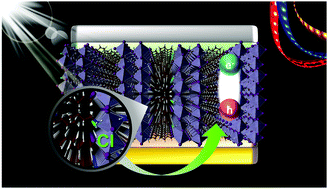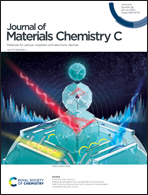First-principles mechanism study on distinct optoelectronic properties of Cl-doped 2D hybrid tin iodide perovskite†
Abstract
The two-dimensional (2D) Ruddlesden–Popper (RP) hybrid organic inorganic perovskite (HOIP) has emerged as a great alternative to its conventional three-dimensional (3D) counterpart, owing to its superior structural integrity under humid conditions. Despite extensive studies on halide doping in 3D perovskites to obtain better optoelectronic properties, understanding of optoelectronic properties through doping engineering of the 2D-RP perovskite is still limited. Using density functional theory (DFT) calculations, we evaluate the optical and electronic properties of Cl-doped lead-free 2D-RP hybrid perovskite, (CH3(CH2)3NH3)2(CH3NH3)Sn2I7−xClx. We calculate key functional descriptors such as the electronic band structures, high-frequency dielectric constant, exciton binding energy and absorption spectrum. The properties are additionally analyzed from the aspect of atomic level chemical bonds between Sn and halide, X (I and Cl). We demonstrate that the incorporation of Cl into 2D-RP HOIPs should enhance the excitonic property and form strong local ferroelectric domains, which reduces the charge recombination rate. Yet, degradation of absorption intensity in the visible light regime observed in the Cl-doped 3D system is not noticeable in its 2D counterpart. Our ab initio results propose a smart design principle and elucidate the mechanism for the optoelectronic functionality of Cl-doped low dimensional hybrid perovskite optimized for various electronic devices.



 Please wait while we load your content...
Please wait while we load your content...